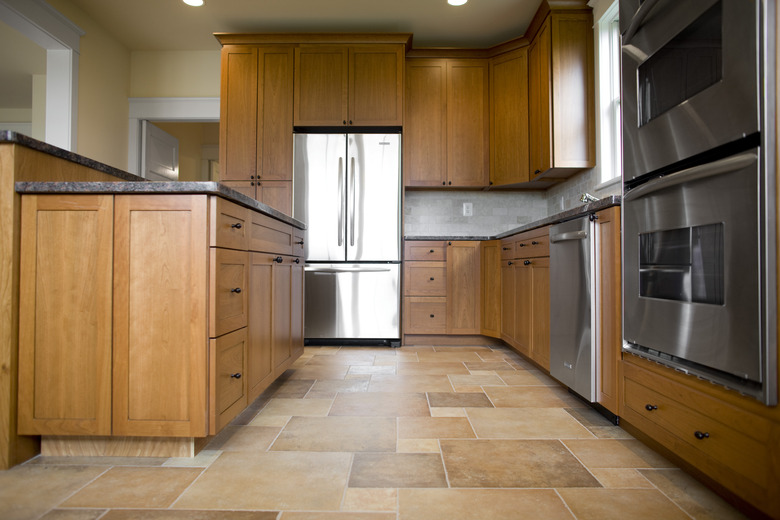How To Install Ceramic Floor Tile Over Linoleum
If you're looking to make upgrades to your home, the kitchen or bathroom floor is a great change to consider. Many older homes and rental units come with kitchen or bathroom flooring made from linoleum, which is an affordable and easy option. Adding ceramic tiles to these spaces can add an element of durability and aesthetic improvement, but can you just slap ceramic tile over linoleum flooring to make that change? The answer is, technically, yes, although it's not as simple as it sounds and will take a few adjustments before your flooring is ready to be converted to ceramic tile.
Can you Cover Linoleum?
Can you Cover Linoleum?
Before you begin to install ceramic over linoleum flooring, you'll need to make sure the condition of your existing flooring is suitable for such a switch. Check for any tears, lifted corners or warping in the flooring — if you spot any of these damages, your current flooring won't be able to be tiled over.
Next, you'll need to confirm whether or not your current linoleum flooring is adhered to a cement subfloor, which will provide the durability needed to support ceramic tiles. Finally, if your current flooring is suitable to cover, check how high your new ceramic tiles will rest on top of your flooring to prevent any possible overlaps with doors or furniture once it's installed.
Placing Tile Over Linoleum
Placing Tile Over Linoleum
If your linoleum flooring can be tiled over, you'll first need to prepare the surface with a good cleaning, which will help your tiles adhere to their new home. To clean, use a scrub brush and water to remove any dirt or residue from the floor. Next, remove the smooth surface of the flooring by sanding it down, which will help your mortar stick to the floor better and will create a more solid foundation for your tiles to rest on.
When you're ready to install tile over linoleum, a thin layer of mortar should be spread over the floor's surface with a flat edged trowel. After the thin layer has dried, which should take about 30 minutes, use a notched trowel to add a second layer over the first layer, taking care to create even ridges over the surface. Then, lay your tiles down on the mortar and place spacers between them so that everything is evenly placed. Finally, add grout between the tiles, allow everything to dry and remove any leftover grout from the tiles once everything is finished.
Additional Methods
Additional Methods
If you're installing porcelain tile over vinyl flooring, you can essentially follow the same steps as those listed above. Use thin-set mortar to adhere your porcelain tiles to your vinyl flooring. Once your tile is placed, you'll most likely need to cut it to size, which can be done with a wet saw. Tiles should be placed, eyeballed and then set in mortar, and the mortar has to set before you apply grout. After grouting, your floor should be ready to walk on after about 24 hours.
If your linoleum flooring isn't suitable to overlay with tile, you can still install tiles by creating a durable and leveled surface to work on top of. Even better — you don't even have to remove your old vinyl flooring, you just have to install a sturdy layer over your flooring. To do this, add cement backer boards to your flooring, taking care to leave a little room around the boards on all sides for expansion. Then, you can follow the steps listed above for installing tile over linoleum — adding two layers of mortar, placing and spacing tiles and adding grout to set.
